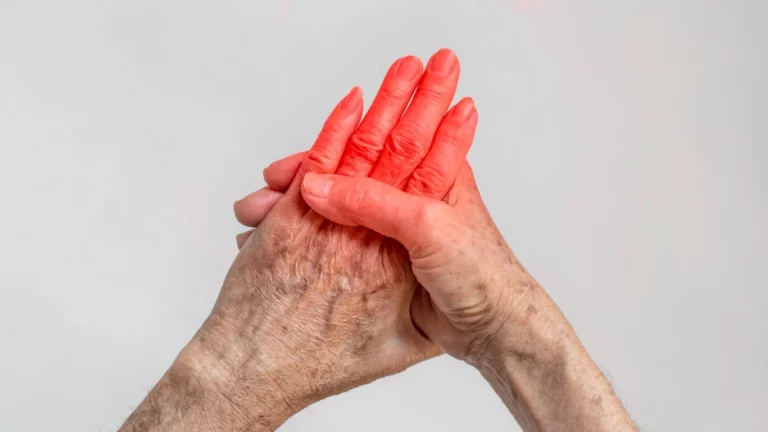Breathe Better Fast: How to Build Lung Strength Naturally Today
If you’re wondering how to build lung strength naturally, you’re in the right place. As a pulmonary nurse practitioner, I’ve seen firsthand how even small lifestyle shifts can make a big difference in how your lungs perform — especially if you’re managing asthma, COPD, or just trying to get your breath back after an illness. I’ll admit, I’ve had patients (and even family members) who thought they were just stuck with “bad lungs,” but that’s rarely the case. Lungs, like muscles, can be trained, strengthened, and supported with the right habits. Let’s dive into what really works — no fluff, no gimmicks.
Why Natural Lung Strength Matters

We often underestimate how much our lungs go through daily. Air pollution, allergens, viruses — our lungs are on the front lines. And while inhalers and medications are life-savers (literally), I always tell my patients: medication is support, not the whole solution. Building natural lung strength helps you breathe easier during everyday activities, manage flare-ups more effectively, and even feel more energized.
Whether you’re climbing stairs without gasping or just trying to keep up with your kids, your lungs play a bigger role in your quality of life than you probably realize. Trust me, I’ve seen patients improve their lung function with consistent effort — sometimes more than they ever expected.
Breathing Techniques That Actually Help

1. Diaphragmatic Breathing
This is one of my go-to recommendations. It’s simple but powerful. Most of us take shallow breaths using our chest muscles, especially when we’re anxious or tired. Diaphragmatic breathing — also known as belly breathing — forces you to engage your diaphragm, which pulls air deeper into the lungs. It increases lung capacity over time and calms your nervous system, too.
How to do it:
- Lie down or sit comfortably with one hand on your belly and the other on your chest.
- Breathe in slowly through your nose, letting your belly rise while keeping your chest still.
- Exhale slowly through pursed lips and feel your belly fall.
2. Pursed-Lip Breathing
I’ve taught this to so many patients during hospital stays. It’s incredibly helpful during flare-ups or even just when walking uphill. It slows your breathing rate, prevents airway collapse, and keeps air moving out of the lungs more effectively.
Here’s how: Inhale through your nose for two counts, then exhale through pursed lips (like you’re blowing out a candle) for four counts. It’s especially good for people with COPD, but even athletes use this to train endurance.
Daily Habits That Support Lung Health

Get Moving — Even a Little
You don’t need to train for a marathon. Walking daily or doing low-impact exercise like swimming or yoga can significantly improve your lung strength. The more you move, the more your lungs are forced to work — and that’s how they get stronger. I’ve had patients start with 5-minute walks and work their way up to full hikes. It’s not about speed, it’s about consistency.
Hydrate, Hydrate, Hydrate
This might sound basic, but staying hydrated keeps your mucosal linings in the lungs thin, which helps your lungs function better and keeps you from feeling congested. I always say: if your pee’s dark, your lungs are probably thirsty too.
Cut the Junk — Especially Smoking and Vaping
Obvious? Maybe. But it’s worth saying because even casual vaping or secondhand smoke can undo your progress. If quitting feels overwhelming, talk to your doc. I’ve walked so many patients through smoke cessation plans, and once they start breathing easier, they never want to go back.
Eat to Breathe Better
Foods rich in antioxidants, like berries, leafy greens, and even dark chocolate, can help reduce lung inflammation. Omega-3s in fatty fish are great too. I always joke that your lungs love what your heart loves — healthy fats, clean foods, and fewer processed snacks.
Watch the Air You Breathe
Indoor air quality makes a bigger difference than you might think. Simple steps like using a HEPA filter, cracking open a window, or avoiding heavy chemical cleaners can help. Some of my patients use indoor plants like spider plants and peace lilies to keep their air fresh naturally — and I keep a few in my own home too.
Natural Supplements That May Boost Lung Strength

When patients ask me about supplements, I always start by saying this: no pill or powder replaces a healthy lifestyle. That said, there are a few natural options that may give your lungs a little extra support — especially if you’re already working on how to build lung strength naturally through breathing and movement.
N-Acetyl Cysteine (NAC)
This one comes up often in my clinic. NAC is a powerful antioxidant that helps thin mucus and reduce inflammation in the lungs. I’ve seen it used with success in people dealing with chronic bronchitis or COPD. It’s not a magic fix, but it can be part of the puzzle. Always check with your healthcare provider before starting it — especially if you’re on medications.
Herbs Like Mullein, Ginger, and Peppermint
I’m a big fan of herbal teas, and these three are often used to soothe the respiratory tract. Mullein, in particular, has been used for centuries to support lung function. Ginger helps reduce inflammation, while peppermint can act as a gentle decongestant. I keep a jar of dried mullein leaves in my kitchen and make tea during allergy season — it really helps clear things out.
Vitamin D and Magnesium
We don’t talk about these enough when it comes to lung health. Low vitamin D levels are surprisingly common and can make your lungs more vulnerable to infection and inflammation. Magnesium, on the other hand, supports smooth muscle relaxation — which includes the muscles around your airways. Bonus: both of these support immune function, too.
Managing Stress for Better Breathing

One thing I’ve learned over the years? Your emotional health directly affects your lungs. Anxiety and chronic stress can lead to shallow breathing, chest tightness, and even trigger flare-ups in asthma or other conditions. It’s something I see all the time — a patient’s lungs improve, but if they’re constantly anxious, their breathing still suffers.
Try Mindful Breathing
This ties in with the breathing exercises we talked about earlier, but it adds a mindfulness twist. Set a timer for five minutes, close your eyes, and focus solely on your breath — no judgment, no pressure. Just notice the inhale and exhale. I do this during lunch breaks, and it helps me reset mentally and physically.
Yoga and Gentle Movement
Even a few sun salutations or seated twists can open up the chest and lungs. I had one patient with post-COVID fatigue who swore by gentle yoga — not just for her body but for her breathing. It’s amazing how connected everything is when you really pay attention.
Sleep Matters More Than You Think
Ever wake up feeling like you can’t get a deep breath? Poor sleep can mess with your breathing patterns and oxygen levels overnight. Make sure your bedroom is cool, quiet, and clean. If you’re snoring heavily or waking up gasping, it’s worth getting checked for sleep apnea. I often refer patients to sleep studies for that very reason — it’s an overlooked cause of daytime breathlessness.
Environmental Tweaks That Protect Your Lungs

Believe it or not, the air inside your home can sometimes be worse than the air outside. Between cooking fumes, dust, mold, and chemical cleaners, our lungs are constantly filtering stuff they shouldn’t have to. The good news is, you can make a few simple changes to reduce that burden — and support your goal of building lung strength naturally.
Invest in a Good Air Purifier
Especially if you live in a city or near a busy road, a HEPA filter can trap the tiny particles that irritate your airways. I have one running in my bedroom 24/7, and it’s made a huge difference — especially during wildfire season or high pollen days.
Open the Windows (When Air Quality Allows)
Stale indoor air traps allergens, CO2, and even bacteria. When the outside air is clean, crack open a window and let it circulate. I tell my patients: fresh air is free therapy for your lungs.
Go Natural with Cleaning Products
Some of the strongest lung irritants are hiding in that lemon-scented spray bottle under your sink. Switching to vinegar, baking soda, and essential oils can keep your house clean without coating your lungs in chemicals. My go-to mix? Vinegar, a little dish soap, and a few drops of tea tree oil — smells fresh, works great.
Bring in the Plants
Spider plants, snake plants, and peace lilies aren’t just pretty — they help purify indoor air and add moisture back into dry rooms. Plus, they’re low-maintenance. I recommend them all the time, especially for folks who are trying to improve indoor air without spending a fortune.
Real-Life Habits That Strengthen Your Lungs Over Time

One thing I remind my patients constantly: building lung strength naturally isn’t a quick fix — it’s more like a daily investment. You don’t need to overhaul your entire life overnight. Just build one small habit at a time. That’s how real progress sticks.
I’ve had patients in their 60s and 70s start with just 10 minutes of walking a day. Fast forward six months, and they’re walking a mile, breathing easier, and sleeping better. That’s the kind of slow, steady transformation I love to see — and it’s totally possible when you give your lungs the attention they deserve.
Keep a “Lung Log”
It might sound nerdy, but jotting down how your breathing feels each day — especially if you’re working through asthma, long COVID, or post-pneumonia — gives you a helpful snapshot of what’s working and what’s not. I’ve even had people color-code their breathing: green for good days, yellow for warning signs, red for flare-ups. It helps us tweak their routine and prevent big setbacks.
Buddy Up for Accountability
Want to make those walks or breathing exercises stick? Do them with a friend or family member. I used to lead a small walking group for patients once a week at the park near the clinic. Not only did it keep folks motivated, but it also made it fun. Community matters, especially when you’re making lifestyle changes that require consistency.
Listen to Your Body — But Don’t Baby It
There’s a balance between pushing your lungs and protecting them. If you’re wheezing, coughing, or feeling faint, that’s your body saying “slow down.” But sometimes we baby our lungs too much and avoid any challenge. Gentle discomfort from exercise is OK. In fact, it’s necessary for growth. I always say: breathe through it, not around it.
How to Stay on Track Without Burning Out

Staying consistent is the hardest part for most people. It’s easy to start strong and then forget why you started. Here are some simple ways I’ve found that help patients stay focused without feeling overwhelmed.
Set a Weekly Lung Goal
That might be “do diaphragmatic breathing every morning” or “take three 15-minute walks this week.” Keep it small. Keep it doable. Over time, those little goals stack up. One of my older clients used to write her weekly goal on her fridge with a magnet. Old-school but effective!
Celebrate the Wins — Even the Small Ones
Walked up the stairs without panting? Slept through the night without coughing? That’s progress. Celebrate it. Share it with someone. Even post about it if that’s your thing. When you notice your own growth, you’re more likely to keep going.
Be Patient with Setbacks
Progress isn’t always linear. You might get sick. Allergies might flare up. Life happens. Don’t toss everything out the window because of one bad week. I tell patients, “We’re not aiming for perfect — we’re aiming for better than before.” That mindset shift makes all the difference.
Final Thoughts: Your Lungs Are Worth the Effort
If there’s one thing I hope you take from all this, it’s that learning how to build lung strength naturally is 100% worth your time. It doesn’t require perfection or expensive equipment. Just a little commitment, consistency, and care. As someone who’s been in the trenches with folks battling everything from asthma to emphysema, I can confidently say: your lungs are more resilient than you think.
They just need a little help — and you’re the best person to give it to them.
References
- https://www.lung.org
- https://www.ncbi.nlm.nih.gov
- https://www.gastro.org
- https://www.cdc.gov
- https://www.mayoclinic.org
Disclaimer
This article is for educational purposes only and is not a substitute for professional medical advice. Always consult your healthcare provider before starting any new health routine, supplement, or exercise, especially if you have a chronic lung condition or take prescription medications.

Bianca Nala is a compassionate Nurse Practitioner with a strong background in primary and respiratory care. As a health writer for Healthusias.com, she combines her clinical expertise with a talent for clear, relatable storytelling to help readers better understand their health. Bianca focuses on topics like asthma, COPD, chronic cough, and overall lung health, aiming to simplify complex medical topics without losing accuracy. Whether she’s treating patients or writing articles, Bianca is driven by a single goal: making quality healthcare knowledge accessible to everyone.






